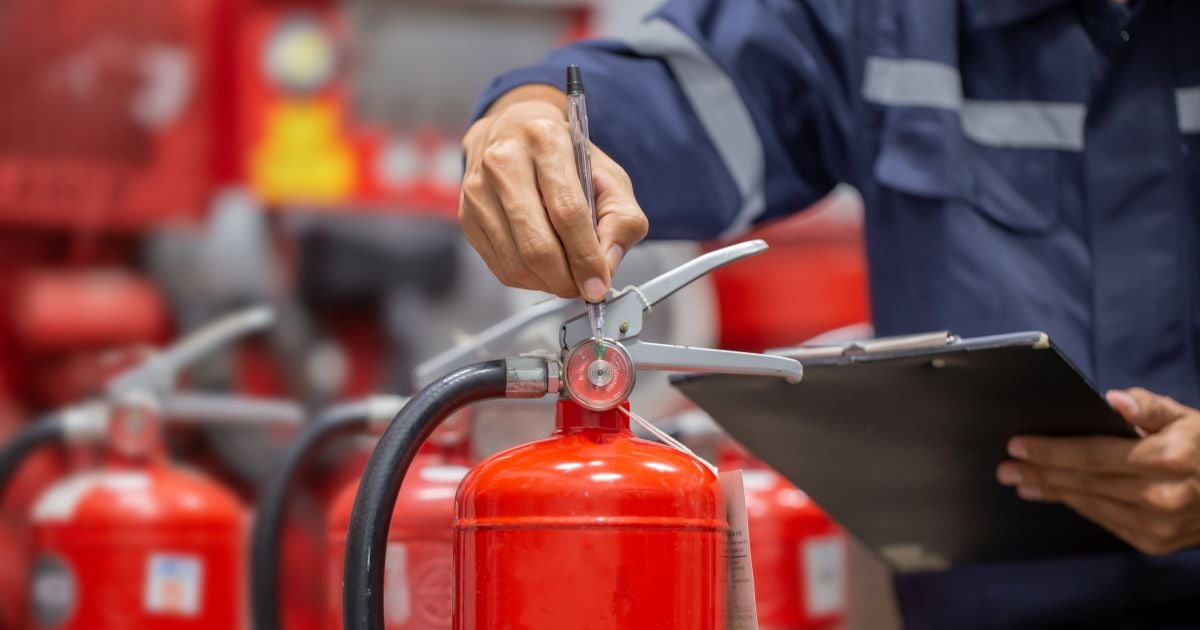Protection against fire is a must for every Sydney business. It’s not only a legal requirement but also a method of keeping the property, employees and customers safe. Many of the risks caused by a fire can be prevented or mitigated with the right precautions. Regular inspections of fire hazards, regular examination of electrical systems as well as complying with CFSP standards all contribute to ensure that the environment is safe.
Fire inspections are why they are the foundation of safety
The first line of defense are fire inspections. Inspections are conducted to ensure that all the components of the fire protection system in the building are functional and current. In Sydney the majority of businesses have to conduct inspections every six or twelve months, depending on the building type and council regulations. Inspections can include everything from smoke alarms and sprinkler systems as well as fire alarm panels, to hydrants, emergency lighting, and fire alarms.

The ability to recognize concealed issues and address them before they cause danger is what makes inspections so crucial. While it might not be important that a slight issue that involves a fire hydrant or smoke alarms that are blocked, can be fatal during an emergency. Regular fire inspections are a proactive way for businesses to ensure that they are meeting their compliance obligations as well as protect themselves from unplanned tragedies.
Test and Tag Test and Tag: Resolving Hidden Electric Risks
Electrical systems are a primary cause of workplace fires. This is the reason why testing and labeling must be included in every fire safety program. The procedure involves examining electrical equipment for safety, function and conformity, before placing a tag on the item to signify that the item has been inspected. For many businesses it’s more than a routine requirement it’s a way to protect against potential risks that are often unnoticed.
Incorrect appliances, old wiring, or worn-out cables can easily become fire hazards If not properly checked. Through regular testing and tagging, businesses reduce the chance of electrical faults which could lead to fire outbreaks. Additionally, it helps employees feel confident that their workplace is secure, thereby fostering confidence and trust within the workplace. Combined with fire inspections and testing, this extensive security plan minimizes risks from a variety of angles.
The importance of CFSP in ensuring compliance and Certification
In New South Wales, only an Competent Fire Safety Practitioner (CFSP) is able to sign and certify crucial documents regarding fire safety, such as Annual Fire Safety Statements. The CFSP certification ensures that only qualified professionals can evaluate and confirm fire safety measures. The use of the CFSP assures that reports and inspections are not just paper work, they are reliable assessments by experts.
The role of a CFSP extends far beyond ticking boxes. They assess the state and performance of fire protection systems, issue complete reports and prove conformity with the rules. Without CFSP certification, businesses risk fines, legal issues and even shutdowns if their fire protection measures are deemed insufficient. Partnering with accredited professionals ensures that the fire safety systems are in place correctly and that compliance obligations are fulfilled without stress.
The Fire Safety Act: A Lifelong Engagement
Safety in the event of fire is an ongoing requirement for every business owner. Regularly scheduled inspections and tests of electrical equipment, along with proper certification by CFSP to create a safety cycle that is never ending. Beyond compliance with law the continuous approach creates a culture of safety within the workplace. Employees feel reassured knowing that evacuation plans clearly laid out are in place, smoke alarms are functional and tested for emergency lighting and fire-fighting systems are fully functional.
The idea of implementing fire safety as an ongoing process instead of the annual checkbox reduces risks but also strengthens a business’s reputation. Customers and clients feel more secure in an environment where safety is clearly emphasized. In the long run, investing in preemptively to prevent fires saves costs by preventing costly damage, fines and legal disputes.
Conclusion
Sydney fire safety needs a multi-layered approach that includes fire inspections, testing, tagging and certification by an CFSP. Each element plays an important role in helping businesses comply with regulations, but more importantly in securing the lives of people and property. Safety is an integral aspect of the business process, not an afterthought. Businesses can comply with their legal obligations and create more stable and secure setting in the future, if security is an integral part of everyday operations.
